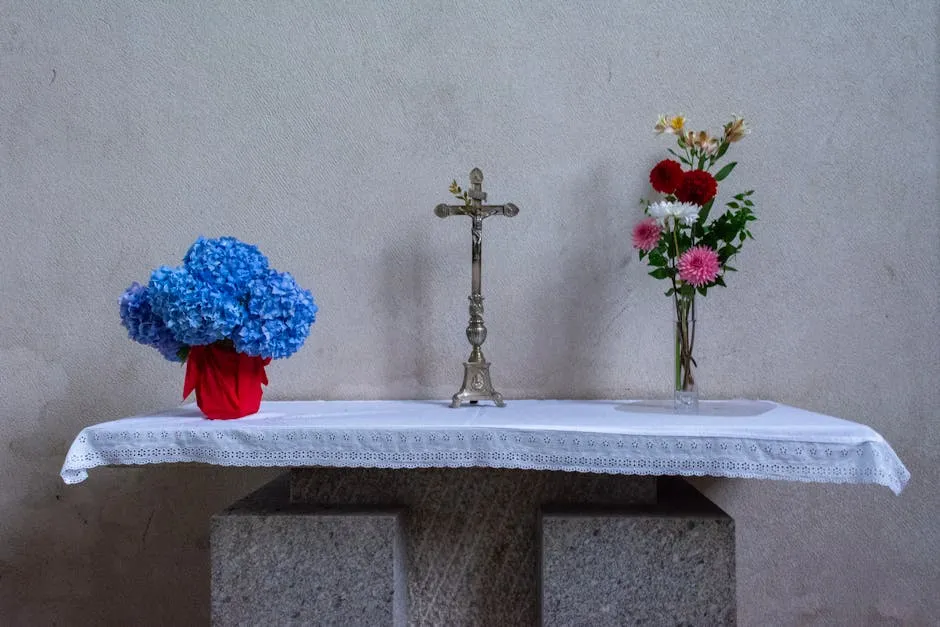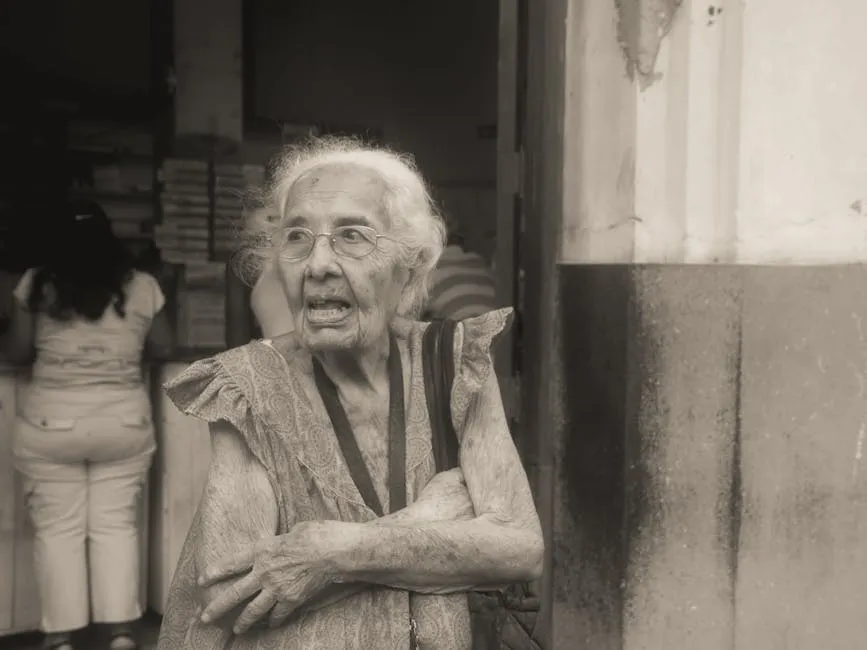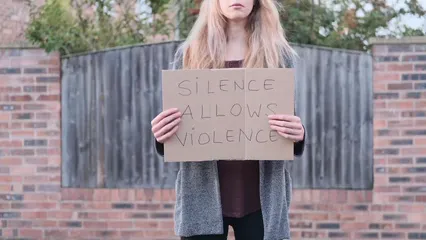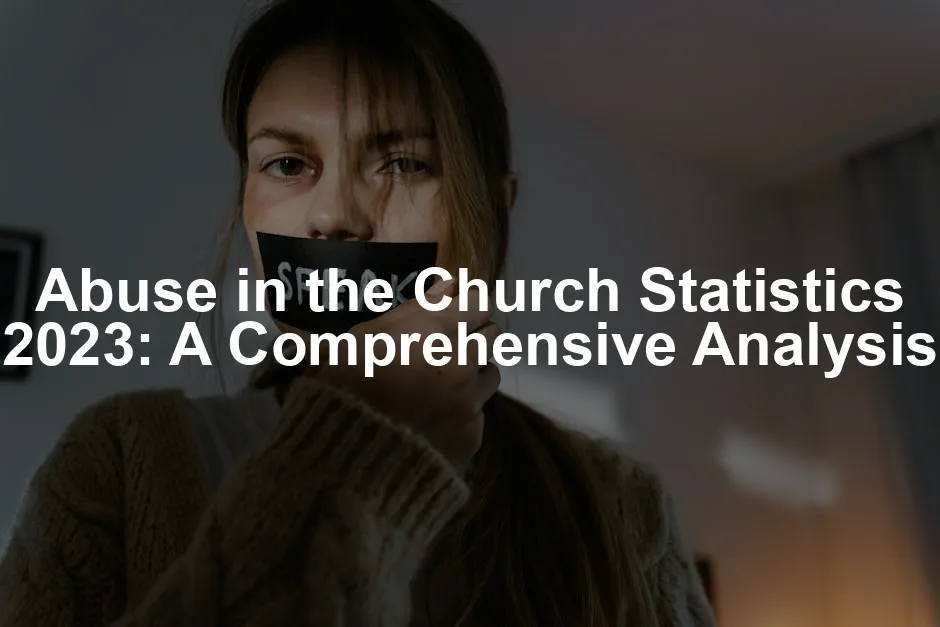Introduction
Abuse in religious institutions is a pressing issue that has shaken congregations worldwide. The significance of this topic cannot be overstated; it impacts victims profoundly and reverberates throughout communities. Individuals who trust their spiritual leaders often face betrayal, leading to lifelong emotional scars.
This article aims to provide a detailed examination of the statistics surrounding abuse within various religious organizations in 2023. From the Catholic Church to Protestant denominations, the focus is on revealing the scale and nature of this pervasive problem.
Transparency and accountability are crucial for healing. Without them, the cycle of abuse continues unchecked. When faith leaders are implicated in misconduct, it not only undermines trust but also hinders the spiritual growth of communities. By shedding light on these statistics, we advocate for necessary reforms and support systems for victims. It’s time to confront this issue head-on, ensuring that places of worship become sanctuaries once again.

Understanding the Context of Abuse in Religious Settings
Historical Overview
Sexual abuse in religious institutions is not a recent phenomenon. For decades, it has been a dark secret, particularly within the Catholic Church and various Protestant denominations. The historical context reveals a troubling pattern of abuse and cover-ups that have persisted over the years.
In the Catholic Church, significant reports have surfaced since the late 20th century. A landmark investigation by The Boston Globe in 2002 uncovered widespread sexual abuse by clergy members, revealing approximately 16,000 victims linked to 3,700 priests. This shocking disclosure led to increased public awareness and policy changes. The Church has since paid over $3 billion in compensation to victims, reflecting an urgent need for accountability.
Protestant denominations have also faced their share of scandals. While research has primarily focused on the Catholic Church, recent studies reveal alarming statistics about sexual abuse in Protestant settings. Investigations into the Southern Baptist Convention uncovered over 700 victims, highlighting a systemic issue within the denomination. This lack of oversight and accountability fosters an environment where abuse can thrive.
Moreover, many religious institutions have historically prioritized protecting their reputations over the welfare of victims. This culture of silence has discouraged survivors from coming forward, perpetuating a cycle of abuse. As we move into 2023, it is crucial to understand this context to address the issue effectively and advocate for meaningful change.

Speaking of understanding trauma, if you’re looking to dive deeper into the psychological effects of abuse, check out “The Body Keeps the Score: Brain, Mind, and Body in the Healing of Trauma” by Bessel van der Kolk. This book is a game-changer for understanding how trauma affects our bodies and minds, and it’s essential for anyone looking to heal.
By recognizing the historical complexities of abuse in religious settings, we can work towards creating safer environments for all individuals, ensuring that faith leaders uphold their moral responsibilities.
Types of Abuse
Abuse within religious settings often takes on various forms, significantly impacting victims and communities. The primary types of abuse reported include sexual abuse, emotional abuse, and spiritual abuse.
Sexual Abuse is perhaps the most notorious form, involving inappropriate sexual actions by clergy or church members against victims, commonly minors. This abuse can manifest as unwanted touching, sexual assault, or exploitation. The power dynamics at play often lead to victims feeling trapped and unable to speak up.
Emotional Abuse occurs when a person in a position of authority manipulates or belittles a victim, severely affecting their mental well-being. This can involve verbal attacks or the use of guilt to maintain control. In religious contexts, emotional abuse might be intertwined with spiritual manipulation, where victims are coerced into believing that their suffering is a test of faith.
Spiritual Abuse involves undermining a person’s belief system or relationship with their faith. This can include using religious texts to justify harmful behaviors or isolating victims from their support systems. Perpetrators often exploit their authority, making it difficult for victims to seek help.
Grooming methods are prevalent in religious settings. Offenders may establish trust with victims and their families, often positioning themselves as protectors or mentors. This manipulation can lead to desensitization, where victims gradually accept inappropriate behavior. Power dynamics further complicate this issue; victims may feel obligated to comply due to the perceived authority of their abuser.
The combination of these factors creates an environment where abuse can thrive, making it crucial for religious institutions to acknowledge and address these issues effectively. By understanding the different types of abuse and their characteristics, communities can begin to foster a safer environment for all members.

The Psychological Impact of Abuse on Victims
Abuse within religious institutions leaves deep psychological scars. Victims often experience a range of mental health issues following their trauma. Studies reveal that many survivors suffer from depression, anxiety, and post-traumatic stress disorder (PTSD). The emotional turmoil can lead to self-destructive behaviors, including substance abuse and self-harm.
Research from the U.S. Department of Justice indicates that individuals abused by clergy members often carry lifelong psychological burdens. The betrayal of trust is particularly damaging. Many victims feel isolated, unable to share their experiences due to fear of judgment or disbelief.
A study published in the Journal of Child Sexual Abuse found that survivors frequently report feelings of helplessness and shame. These feelings can stem from the perceived authority of their abusers. The church, meant to be a sanctuary, instead becomes a source of trauma. This betrayal complicates the healing process, making recovery challenging for many.
Additionally, the long-term effects of such abuse often manifest in disrupted relationships and difficulties in forming healthy connections with others. Victims may struggle with their faith, leading to a spiritual crisis, further complicating their emotional recovery. Understanding the profound psychological impact of abuse is crucial for providing appropriate support and resources to survivors.

If you’re interested in personal growth and overcoming trauma, consider reading “The Gift of Imperfection” by Brené Brown. This book encourages readers to embrace their true selves, shedding the weight of societal expectations, which is essential for healing after trauma.
Protestant Churches
Abuse in Protestant denominations has revealed shocking statistics. In the Southern Baptist Convention, a significant investigation uncovered that over 700 victims have reported abuse since 2000. This alarming figure highlights the pervasive issue of sexual misconduct within this major denomination, where a history of silence and inaction has fueled continued abuse.
The Church of Jesus Christ of Latter-day Saints (LDS) has also faced scrutiny. Reports suggest that the organization has inadequately addressed abuse allegations. A notable lawsuit awarded $2.28 billion to a survivor after church officials allegedly failed to report her abuse, which took place on church property.
Statistics show that nearly 44% of U.S. Protestants have experienced sexual misconduct in church settings. A survey found that 10% of young adults under 35 have left their churches due to dissatisfaction with how abuse cases were handled. The absence of centralized oversight in Protestant denominations can lead to isolated incidents of abuse that often go unreported.
Furthermore, a study analyzed 326 cases of sexual abuse in U.S. Protestant churches from 1999 to 2014. The research categorized offenders into three types: on-site, off-site, and serial offenders. This classification underscores the necessity for comprehensive policies that can effectively prevent and address abuse in these settings.
The implications of these findings are staggering. They reveal not only the prevalence of abuse but also systemic issues that allow such behavior to persist. The culture of protecting the institution at all costs often leads to a lack of accountability for abusers, further endangering victims and potential future ones.

Other Religious Organizations
Abuse is not confined to Christianity. Jehovah’s Witnesses report cases where elders have been accused of sexual misconduct but have not reported these allegations to authorities. A culture of secrecy and the application of the two-witness rule often hinder victims from coming forward.
Various non-Christian organizations also face scrutiny. Reports indicate that numerous faith-based groups have similar issues, leading to a significant number of abuse cases. The prevalence of abuse in different religious contexts highlights the urgent need for systemic changes across all organizations, ensuring the protection of vulnerable individuals and accountability for those in positions of power.
In summary, the statistics reveal a troubling trend of abuse across religious organizations, emphasizing the critical need for reform and support for victims.

Public Perception and Response to Abuse
Surveys and Public Opinion
Recent surveys shed light on the public’s perception of abuse within religious institutions. A 2022 YouGov survey revealed significant concern among Americans regarding child sexual abuse in churches. Notably, 49% of respondents viewed abuse in the Catholic Church as a very big problem. Additionally, 24% believed it to be somewhat of a problem. This perception reflects a growing awareness of the issue, as trust in these institutions has been shaken.
In the Church of Jesus Christ of Latter-day Saints, 26% of participants considered abuse a very big problem, while 23% felt it was somewhat problematic. These statistics underscore the palpable unease within communities about the safety of their children in religious settings.
The findings suggest that many individuals recognize the systemic nature of abuse in these institutions. A staggering 44% of U.S. Protestants reported experiencing sexual misconduct in church environments. This alarming statistic highlights a broader issue that transcends individual denominations, emphasizing a cultural problem that warrants immediate attention and action.
Public sentiment is increasingly leaning towards accountability. Many respondents express the need for reform within these organizations. Victims are calling for change, seeking a safe environment for worship and community support. It appears that a significant number of people believe that addressing such issues head-on is crucial for restoring trust in religious institutions.

Institutional Responses
Religious organizations have begun to respond to allegations of abuse, although the effectiveness and sincerity of these responses vary greatly. Many institutions are taking steps to implement policy changes aimed at increasing transparency and accountability. For instance, the Catholic Church has established protocols for reporting abuse and vetting individuals working with children. Enhanced training programs are now being rolled out to help identify potential abuse cases more effectively.
The U.S. Conference of Catholic Bishops reported that in 2023, 1,254 victims filed 1,308 complaints. This indicates an ongoing need for support services, which the Church is striving to address. They provided assistance to 183 new victims while continuing to support over 1,600 individuals from previous years.
Protestant denominations have also faced scrutiny and have made strides to confront the issue. Investigations within the Southern Baptist Convention unveiled over 700 victims of abuse, leading to calls for systemic reforms. The church leadership has been urged to adopt comprehensive measures that prioritize the safety of congregants over institutional reputation.
In recent years, some religious organizations have begun to establish independent review boards to assess and address abuse allegations. This shift towards external oversight is a positive step, albeit one that is being implemented with varying degrees of commitment across different faiths.
Despite these responses, many critics argue that the actions taken by these institutions are often reactive rather than proactive. There is a pervasive feeling among survivors and advocates that more needs to be done to ensure that these organizations prioritize victim support and prevention strategies. The public is watching closely, and the pressure on religious institutions to improve their responses to abuse allegations is mounting.
Ultimately, transparency and accountability are essential for rebuilding trust. The path forward will require a commitment to change, ensuring that the safeguarding of vulnerable individuals is placed at the forefront of religious institutions’ missions. Only then can healing begin for the victims and communities affected by such profound betrayal.

Case Studies: Noteworthy Incidents of Abuse
High-Profile Cases
Throughout history, numerous high-profile abuse cases have captured public attention, serving as painful reminders of the ongoing struggle against misconduct within religious institutions. One of the most notorious cases involved the Catholic Church in the United States, where investigations revealed that over 450 clergy members had abused nearly 2,000 children in Illinois alone. Reports indicate that these abuses spanned decades, with many victims suffering in silence due to fear and shame.
Another alarming case emerged from the Southern Baptist Convention, where a comprehensive investigation uncovered around 700 victims of abuse. This inquiry revealed that church leaders often prioritized protecting the institution’s reputation over addressing the needs of victims. Survivors and advocacy groups criticized the church for maintaining a private list of abusive pastors while publicly claiming to prioritize safety.
In Spain, an independent commission reported that approximately 200,000 children were estimated to have suffered sexual abuse at the hands of Catholic clergy. This staggering figure resulted from a large-scale investigation that involved interviewing hundreds of survivors. The report highlighted the devastating emotional impact on victims, many of whom struggled with the trauma throughout their lives.
These cases illustrate the profound impact of abuse on both victims and their communities. Survivors often face a long and difficult road to recovery, battling psychological issues such as depression, anxiety, and post-traumatic stress disorder. The repercussions extend beyond the individual, affecting families, congregations, and the broader public perception of faith-based organizations.

The media coverage surrounding these high-profile incidents has played a crucial role in raising awareness and prompting public dialogue about the need for systemic change. Advocacy groups continue to push for reforms within religious institutions, demanding greater transparency, accountability, and support for survivors.
As we reflect on these noteworthy incidents, it becomes evident that the fight against abuse within religious organizations is far from over. Victims’ voices must be amplified, and their experiences acknowledged to pave the way for meaningful change and healing.
Legal Outcomes and Compensation
The legal landscape surrounding abuse cases in religious institutions is complex and often fraught with challenges for victims. Many survivors of abuse have sought justice through the courts, and the outcomes can vary significantly. In recent years, numerous religious organizations have faced lawsuits that have resulted in substantial settlements. For instance, the Catholic Church has paid over $3 billion in compensation to victims since the early 2000s. This staggering figure underscores the severity of the issue and the financial ramifications for institutions that fail to protect their congregants.
In 2023, the U.S. Conference of Catholic Bishops reported that 1,254 victims filed 1,308 complaints. This reflects a continued surge in awareness and willingness among survivors to come forward. The Church has implemented protocols aimed at addressing these allegations, including enhanced training for clergy and support for victims. However, many survivors still feel that the compensation offered does not adequately reflect the trauma they endured.

The Protestant community is not immune to legal scrutiny. The Southern Baptist Convention has come under fire for its handling of abuse cases. Investigations have revealed that over 700 victims have come forward, with many claiming inadequate responses from church leadership. This has led to calls for greater accountability and transparency within the organization. Legal actions taken against these institutions often result in settlements, but critics argue that these payments can sometimes serve as a means to silence victims rather than a genuine acknowledgment of wrongdoing.
Additionally, the compensation process can be emotionally taxing for victims. Many survivors face not only the pain of reliving their trauma during legal proceedings but also the challenge of navigating a system that can feel indifferent to their suffering. It’s crucial for religious organizations to recognize the long-lasting impact of abuse and to prioritize healing over mere financial settlements. Building trust with victims requires more than compensation; it necessitates a commitment to change and a genuine desire to prevent future abuse.
Recommendations for Future Action
To effectively combat abuse within religious institutions, actionable steps are essential. First and foremost, improving reporting mechanisms is critical. Many victims hesitate to come forward due to fears of disbelief or dismissal. Establishing confidential and accessible reporting systems can encourage survivors to share their experiences without fear of retribution. Faith leaders must actively promote these avenues, ensuring that congregants understand their rights and the resources available.
Training for clergy and church staff is another vital component. Comprehensive training programs should focus on recognizing signs of abuse, understanding grooming tactics, and implementing appropriate responses when allegations arise. By educating leaders on these issues, institutions can foster an environment that prioritizes the safety and well-being of all members.
Moreover, religious organizations should implement independent oversight committees. These committees can investigate allegations impartially and ensure accountability within the institution. Transparency in how cases are handled is essential for rebuilding trust with congregants.
Support services for victims should also be expanded. Many survivors require counseling and legal assistance as they navigate their healing journeys. Establishing partnerships with local mental health organizations can provide necessary resources for those affected.
Lastly, fostering a culture of openness and dialogue about abuse is crucial. Religious institutions need to encourage discussions that address the realities of abuse rather than shying away from the topic. This includes creating safe spaces where congregants can express their concerns and experiences.

By taking these steps, religious institutions can demonstrate a genuine commitment to preventing abuse and supporting victims. Only through proactive measures can they begin to heal the wounds inflicted by such betrayals of trust.
FAQs
What are the most common types of abuse reported in churches?
In religious settings, the most frequently reported types of abuse include sexual abuse, emotional abuse, and spiritual abuse. Sexual abuse often involves inappropriate contact or exploitation, while emotional abuse may manifest as manipulation or belittlement. Spiritual abuse undermines a person’s faith or relationship with their beliefs, often utilizing religious authority to control.
How can victims report abuse in church settings?
Victims can report abuse by contacting local authorities, their religious institution, or trusted individuals within their community. Many organizations now provide confidential hotlines or reporting systems designed to ensure the safety and anonymity of survivors. Seeking support from mental health professionals can also aid individuals through this challenging process.
What support services are available for victims of abuse in religious institutions?
Victims of abuse in religious institutions can access various support services, including counseling and legal assistance. Many organizations partner with mental health agencies to provide therapy and support groups for survivors. Additionally, legal resources are available to help victims navigate their rights and pursue justice.
Please let us know what you think about our content by leaving a comment down below!
Thank you for reading till here 🙂
And if you’re seeking even more insight into trauma recovery, consider “Healing the Trauma of Abuse: A Woman’s Workbook” by Mary Ellen Copeland. This workbook is designed to guide survivors through their healing journey, providing practical exercises and insights.
Furthermore, if you want to understand the intricacies of trauma and recovery, you might find “Complex PTSD: From Surviving to Thriving” by Pete Walker a valuable resource. It provides profound insights into the effects of complex trauma and offers strategies for recovery.
All images from Pexels




